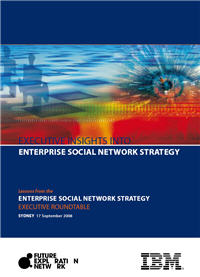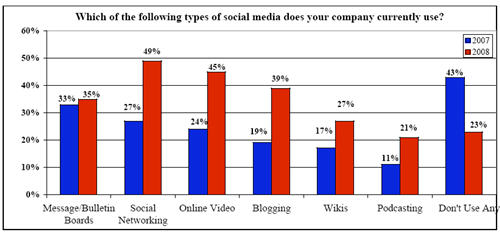The Age: Social networking can help business
The Age has just published an article titled Social networking can help business, based on our Executive Insights into Enterprise Social Network Strategy report, released yesterday.
Much of the article describes the report, and takes some of the executive quotes used in the report. Then at the end, taken from a follow-up interview with me, it says:
Chairman of company Future Exploration Network Ross Dawson said there had been a transformation in the corporate attitude towards social networking over the past year.
“An initial scepticism and caution from executives has now shifted dramatically where they recognise that these can be extremely valuable for helping organisations perform more effectively,” Mr Dawson told AAP.
Some Australian companies were not so positive about using social networking technology in the workplace, Mr Dawson said.
“There’s a lot of diversity in the opinions of senior executives, some are still both extremely sceptical and extremely cautious.”
That’s the state of the nation. There absolutely has been a dramatic shift in attitude by senior executives towards social networks and similar tools in the enterprise over just the last year. However within many organizations there is a strong divide in perceptions, often meaning that relatively little happens.
The pace of change in how executives view social networks certainly suggests that this is not far from becoming truly mainstream in the enterprise.



